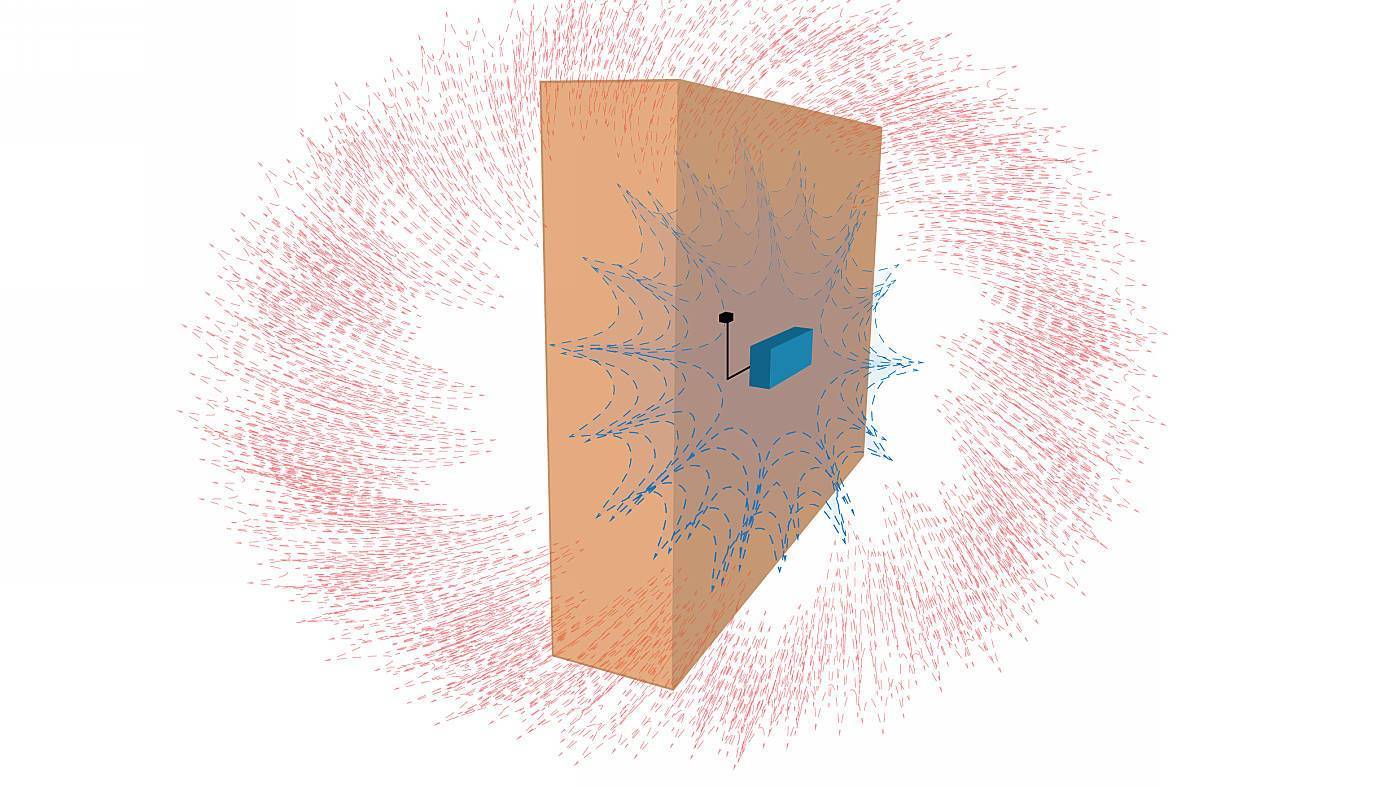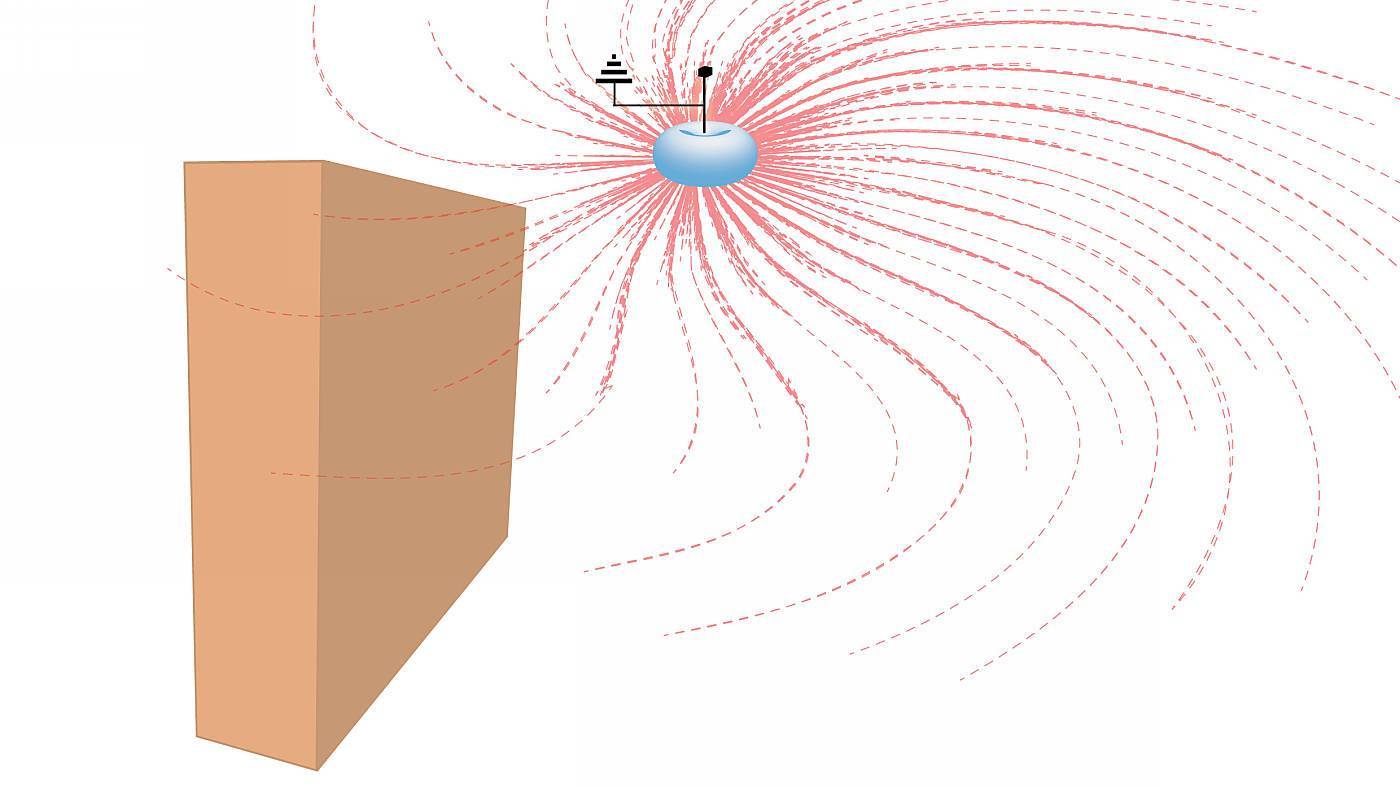The fact that certain wave forms and frequencies affect the movement of moisture in porous building materials, can open the door to new, non-invasive technologies in moisture control - both drying and wetting - applicable to a wide variety of fields, including the control of moisture in (old) buildings.
Potential Applications
Because we operate in the field of building conservation and deal with old buildings, here are two potential technologies for making old buildings drier.
Option 1 [ADDITIVE]: Actively outputting in the building those wavelengths that reduce the moisture content of the walls

Outputting certain wavelengths into the environment
If certain wavelengths can reduce the humidity of the walls, applying these to the walls can make them drier. This could be technically achieved with a wall mounted signal generator or oscillator outputting the right combination of frequencies.
There should be no safety concerns here, as the required energy and field intensity to achieve this is very small. The order of magnitude of currents in damp brickwork are in the nano ampere (nA = billionth of an ampere) range.
Option 2 [SUBTRACTIVE]: Suppressing those wavelengths from the environment that contribute to wetting

Collecting and filtering out certain wavelengths from the environment
This solution takes a reverse approach. Instead of outputting certain signals, it gathers and nullifies from the environment those frequencies that contribute to the accumulation of moisture inside the wall fabric. Suppressing them or making their effect less pronounced results in a drier wall fabric.
This could be technically achieved with an electronic filtering system, using a combination of band-pass or band-stop filters electronic engineers are so familiar with.
Both technologies exist out there and they work. Our magnetic DPC technology works based on this 2nd option, drying old building structures non-invasively.
Some Observations
Some key differences between the two approaches:
- Additive solutions are powered, they can only be deployed in building that have a working power supply.
- Subtractive solutions can be active, passive (e.g. non-powered, using passive components only) or mixed. Passive systems can be deployed in buildings with no power source (e.g. barns to be converted, run-down buildings, cellars etc.) - so they offer more flexibility in application.
- Passive subtractive systems are totally "green" as they do not emit anything, do not create any electromagnetic pollution. On the contrary: by filtering out and collecting some of the ambient "electrosmog", they reduce the electromagnetic pollution, contributing to a cleaner environment.



